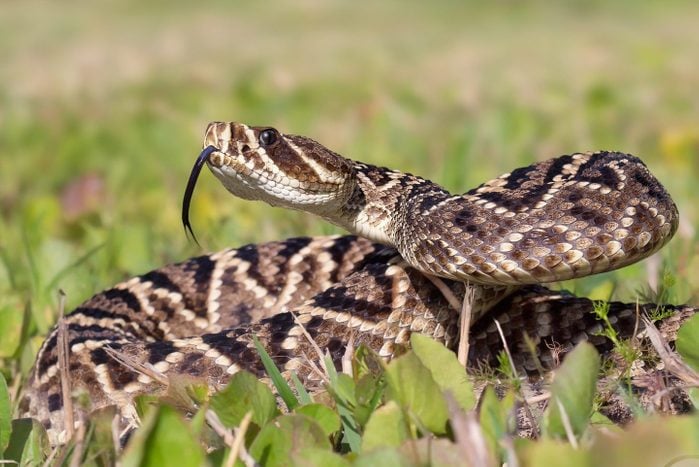Don't get bitten! Discover the types of venomous snakes that could be hiding in your yard and learn how to stay safe.
8 Types of Venomous Snakes in Your Yard
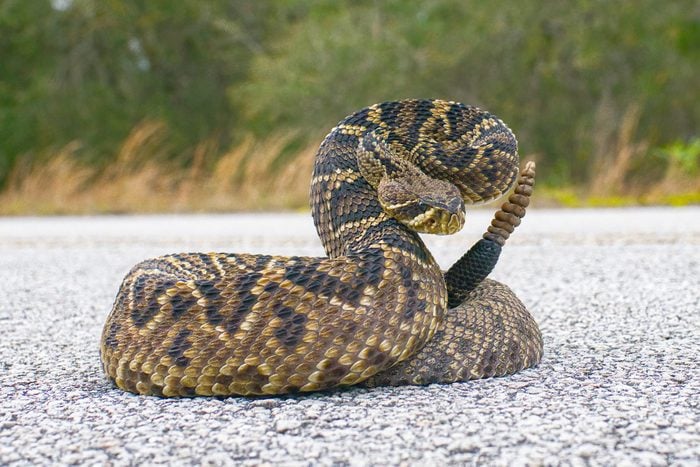
Rattlesnakes
There are 16 species of rattlesnakes found in the United States. The “rattle” comes from the signature noise these slithering reptiles make whenever they sense danger. Most fatal snake bites are the fault of a rattlesnake.
Where to find them: All regions of the U.S. You’re likely to spot a rattlesnake in wooded areas near logs or boulders, although sometimes you’ll see them in open areas.
What they look like: These snakes have large, thick bodies with geometric patterns across their skin in shades of brown.
How they act: Rattlesnakes have powerful bodies that can quickly coil, then stretch out. The visible rattle on their tail buzzes when the snake feels threatened.
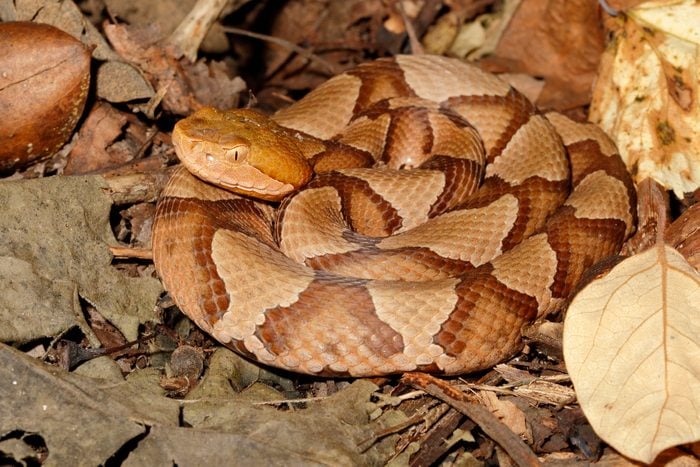
Copperheads
Copperheads are responsible for significantly more venomous bites that any other type of venomous snakes. Copperhead bites are less deadly than rattlesnake bites, but you still want to avoid them. You’ll quickly know if a snake is a copperhead by their signature copper color.
Where to find them: Northeast, Southeast and Midwestern states. Copperheads tend to hang out in forests or around water sources.
What they look like: These can be any copper-toned color, from red to golden tan to brown to bright orange. Fully grown ones tend to be 18 to 36 inches long.
How they act: These snakes aren’t the most aggressive. They freeze when frightened. However, if persistently agitated, they can stretch and strike.
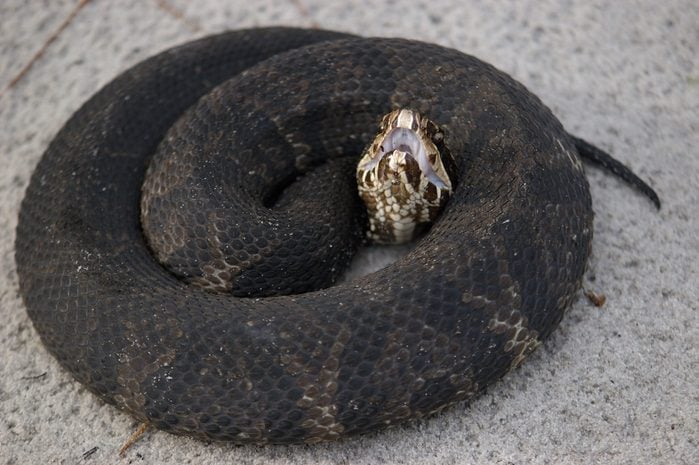
Cottonmouths
Cottonmouths, aka water moccasins, are a semiaquatic type of venomous snake. The name comes from the white color on the inside of their mouths, which they will show off before an attack.
Where to find them: Southeastern states near wetlands or water sources. They tend to inhabit a little more than two acres of land.
What they look like: Cottonmouths have a distinctive triangular head and can grow up to six feet long. Their skin takes on various shades of brown and black. Young cottonmouths may have an orange or yellow tail.
How they act: Cottonmouths are not necessarily aggressive unless provoked. In such a situation, they’ll flatten their body and open their mouth.
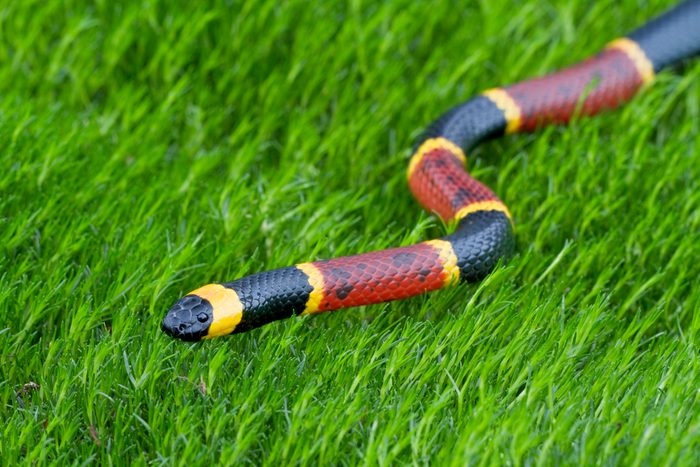
Coral Snakes
Not to be confused with the nonvenomous king snake, coral snakes feature a distinctive tricolor pattern. Look for red, yellow, black or white bands or rings around their bodies. These bright colors give coral snakes their name.
Where to find them: Southern states.
What they look like: They’re easier to identify than most venomous snakes; distinctive bands of color give them away. They can be two to four feet long with slender bodies.
How they act: Coral snakes do not like to be seen. They most often hide behind brush or escape underground. If you spot one, look at the tip of its tail to see if it is calm or frightened. A curled-up tail means the snake feels threatened.
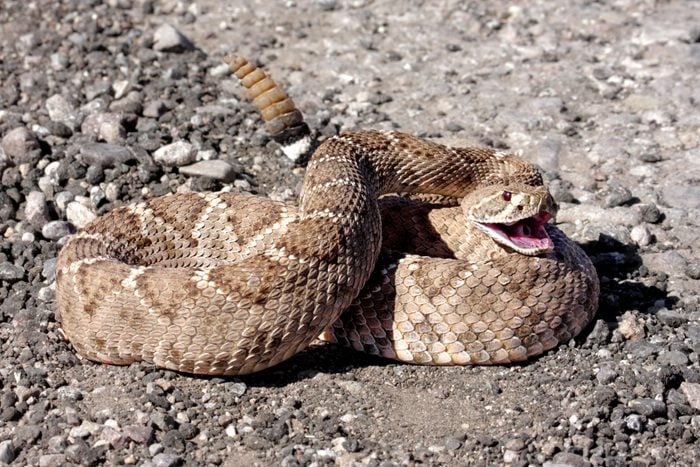
Western Diamondback Rattlesnake
Commonly found in the Southwest and northern Mexico, you’ll recognize this one by the pattern of diamonds running along its back.
Where to find them: Southwestern states.
What they look like: These snakes feature the signature rattlesnake look, with a triangular-shaped head and heavy body. They’re brown and gray, with dark diamond patterns along their entire body.
How they act: Like other rattlesnakes, a Western diamondback’s tail buzzes when it feels threatened.
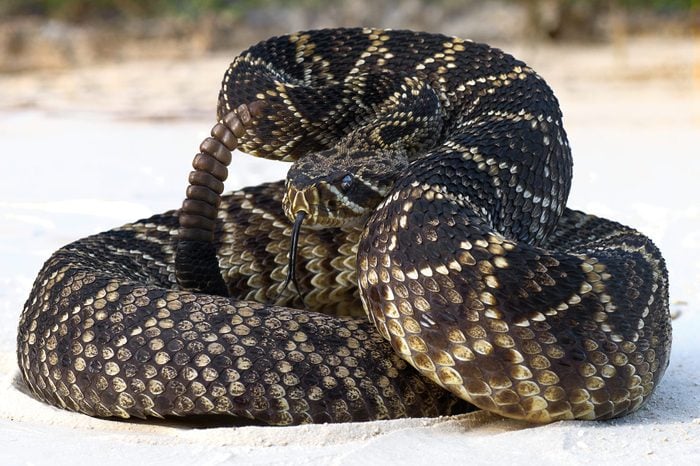
Eastern Diamondback Rattlesnake
You do not want to come face-to-face with an Eastern diamondback rattlesnake, the most deadly of all venomous snakes in the U.S.
Where to find them: Southwestern states.
What they look like: Eastern diamondbacks resemble the Western type, only darker. They feature the same brown, black and gray color scheme and signature diamondback patterns.
How they act: Eastern diamondbacks sometimes rattle their tail when in danger, but not always. Best to watch out and back away from a rattlesnake whether you hear the sound or not.
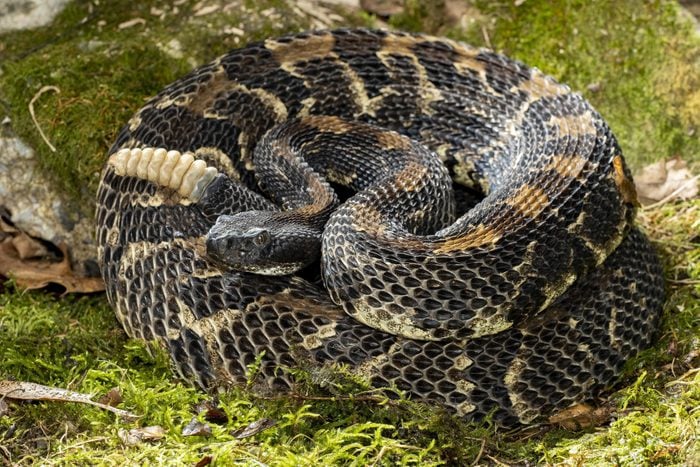
Timber Rattlesnake
This venomous pit viper inhabits forested areas across the Eastern U.S.
Where to find them: Northeastern and Southeastern states.
What they look like: Color can vary between yellowish brown and dark gray, with thick black or brown stripes along their back. These can grow exceptionally long. Some have been reported up to six feet, with three to four feet more common.
How they act: Like other rattlesnakes, these rattle their tail when agitated. This type is known for giving a lengthy warning before attacking. Timber rattlesnakes tend to have a more mild temperament than other types of rattlesnakes.
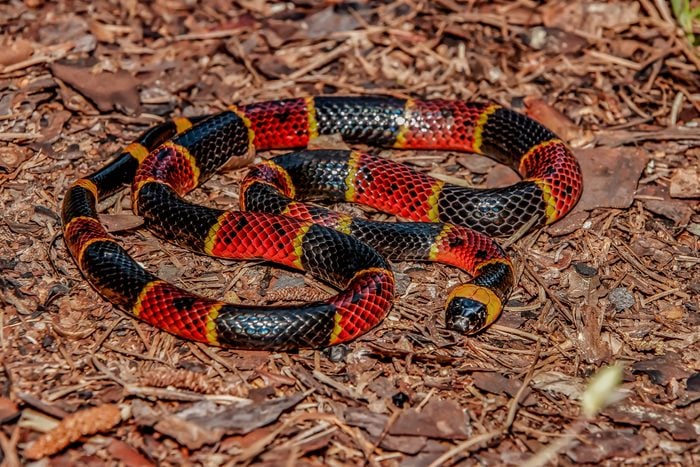
Eastern Coral Snake
This type of coral snake is specific to coastal and lowland regions with warmer climates. Fortunately, few of their bites actually contain venom, but it’s not a risk you should take.
Where to find them: Southeastern states.
What they look like: Known for distinctive bands of red, yellow, black or white along their body. They’re typically two to three feet long when fully grown, with a slender, smooth physique.
How they act: Eastern coral snakes prefer to be out-of-sight, out-of-mind. They often hide in the ground or beneath brush. When they sense danger, the tip of their tail coils up.

